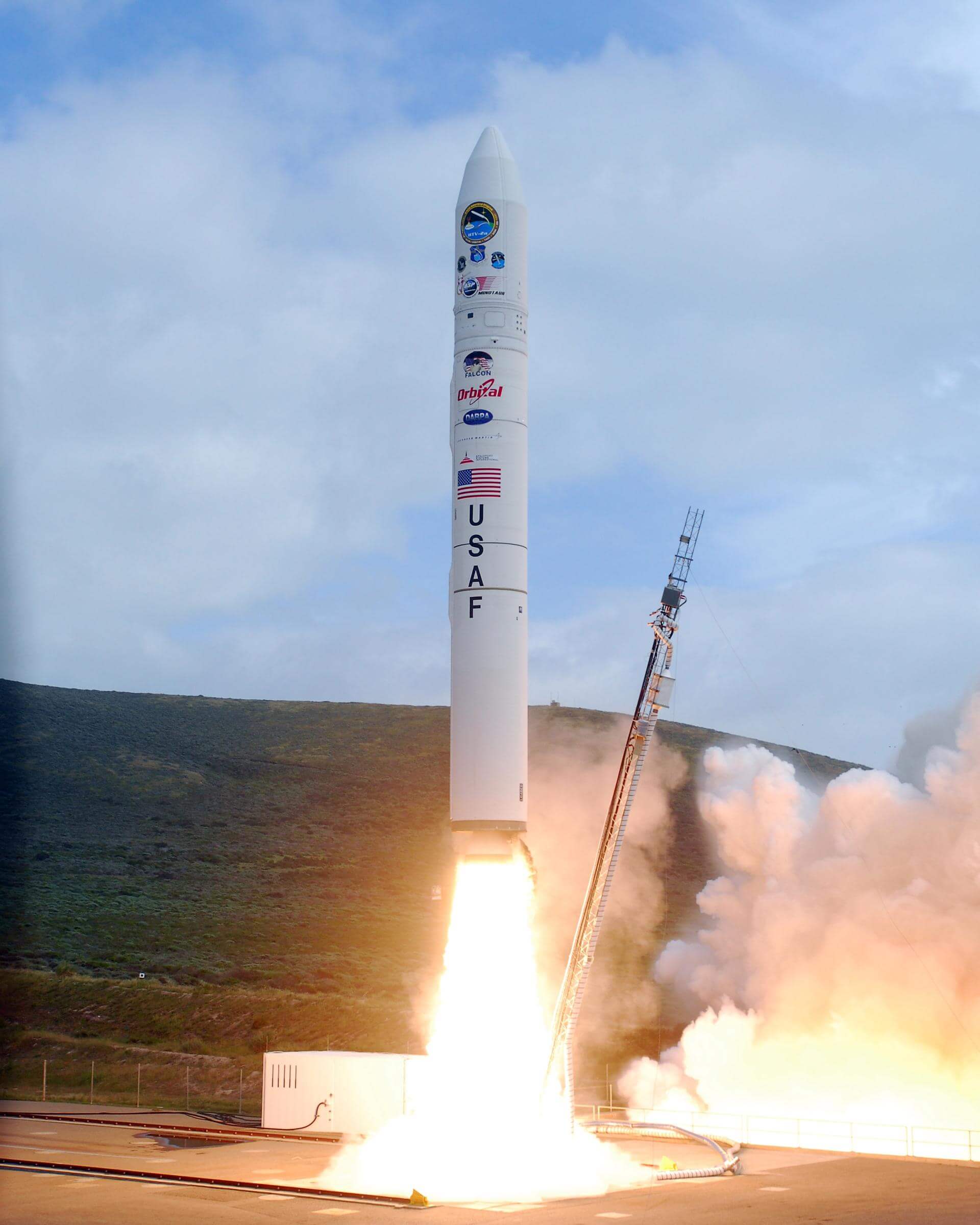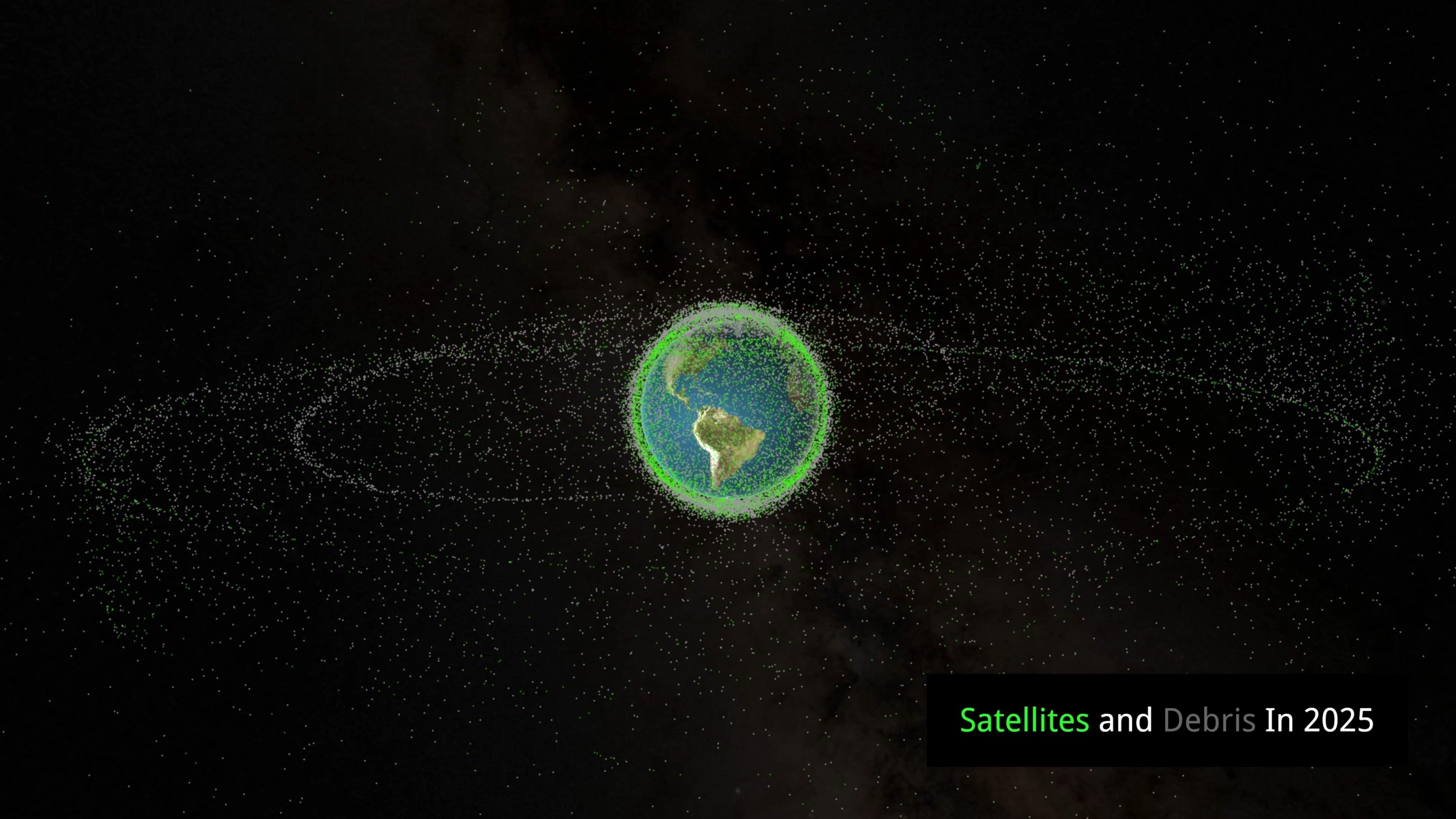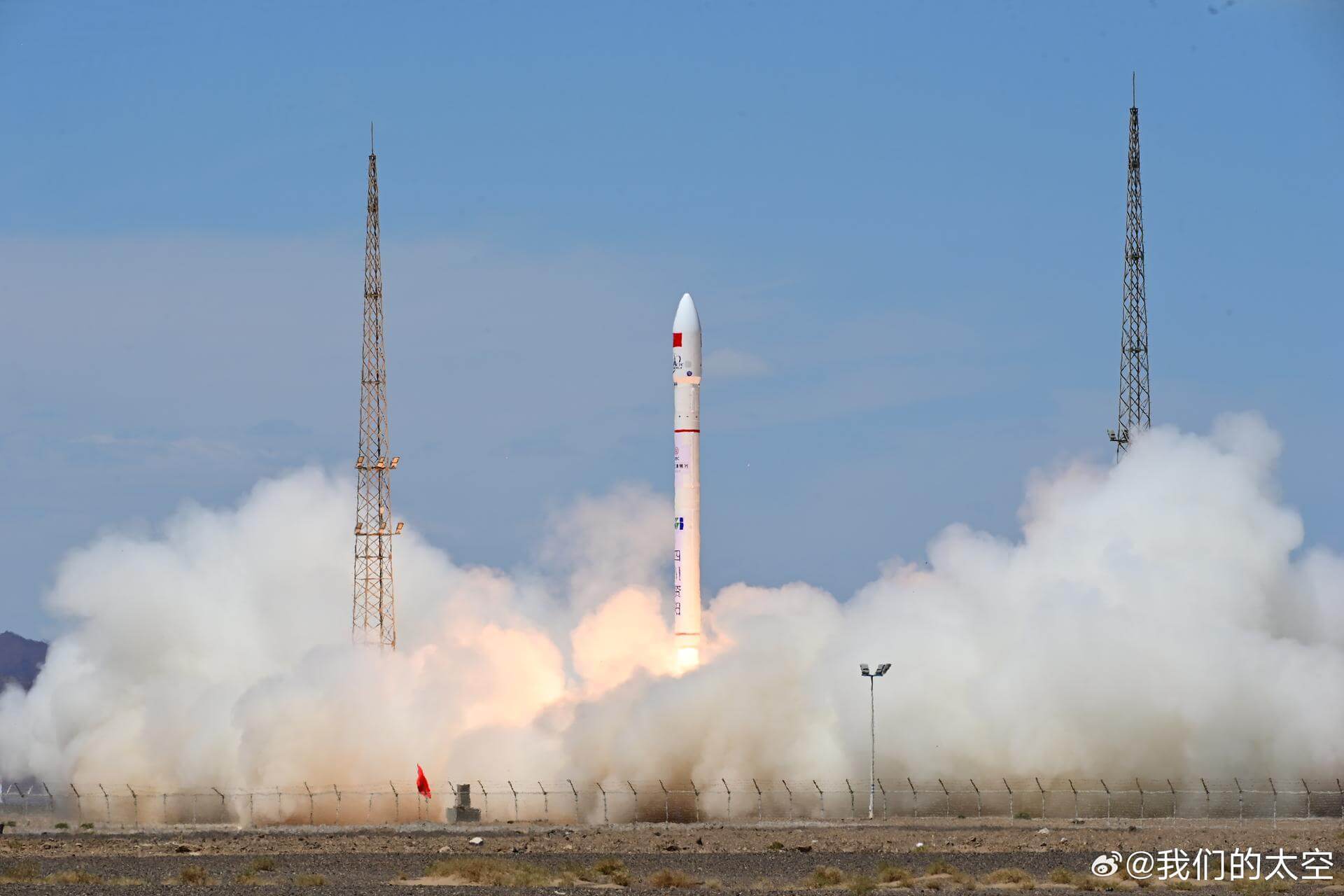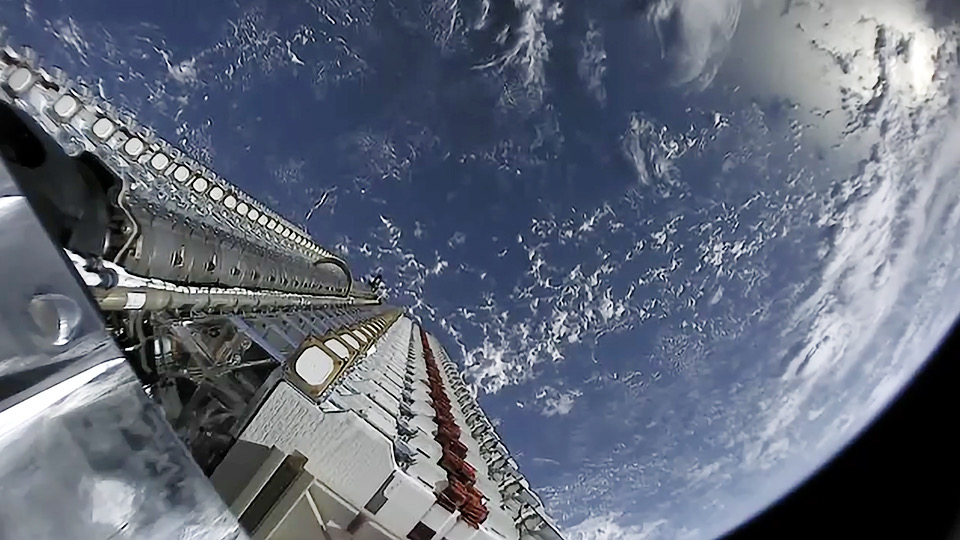· space brief · 6 min read
Space Brief 22 May 2025
Today's brief covers strategic alignments in U.S. military space operations, a landmark missile defense program, and advances in secure satellite communications.

📄Top Stories
The U.S. military continues to reshape its space operations through strategic agreements and advanced defense initiatives. Notably, the Space Force and NGA have taken a decisive step to streamline cooperation, while President Trump has tapped a Space Force general for a major missile defense project. Additionally, advancements in secure satellite communications via the ATLAS Freedom platform further enhance U.S. military capabilities.
📰Detailed Coverage
Space Force & NGA Join Forces for Enhanced Intelligence Operations
In a significant move towards integrated operations, the Space Force and the National Geospatial-Intelligence Agency (NGA) have formalized an agreement to clarify their respective intelligence roles. This agreement aims to reduce bureaucratic turf disputes and enhance collaborative efforts in satellite and intelligence operations, ultimately strengthening national security.
This partnership highlights the critical role of streamlined operations in tracking and managing satellite data more effectively, showcasing the potential for improved coordination in space-based intelligence tasks.
Read the full story: SpaceNews
Golden Dome: Space Force Leads Ambitious Missile Defense Program
President Trump’s announcement of the $175 billion Golden Dome missile defense initiative is set to transform U.S. space defense capabilities. At the helm is a Space Force general, reflecting a substantial shift towards space-based defense systems designed to counter potential threats through innovative space technology.
The Golden Dome’s emphasis on space-based components underscores the importance of reliable satellite tracking and management, aligning closely with our web app’s focus on providing accurate satellite data and monitoring capabilities.
Read the full story: SpaceNews
Unarmed ICBM Demonstrates U.S. Military Readiness
Demonstrating strategic deterrence, the U.S. military successfully launched an unarmed intercontinental ballistic missile (ICBM) on a 4,200-mile flight. This test underscores the U.S.’s commitment to maintaining a robust and responsive nuclear arsenal, with satellite tracking playing a vital role in monitoring such military operations.
Read the full story: Space.com
Boost in Satellite Security with ATLAS Freedom Software
ATLAS Space Operations has showcased its Freedom software platform, designed to enhance secure and scalable satellite ground operations for military applications. Partnering with the U.S. Air Force Research Lab and the Defense Innovation Unit, this platform offers new models for integrated military satellite operations, promising greater security and efficiency under the Hybrid Space Architecture initiative.
This development is particularly relevant to those tracking military satellites, offering insights into improved data handling and operational security.
Read the full story: Spacewar.com
Balancing Progress: Space Force’s New Personnel Laws
The Space Force’s efforts to balance progress and partnership through new personnel laws highlight its commitment to efficient operations with a compact yet effective team. These laws focus on optimizing the contribution of its 9,400 military personnel, supported by 5,000 civilian employees, reflecting a shift towards agile and responsive military space operations.
Read the full story: SpaceNews
🛰️Satellite Spotlight
- Satellite Name: EXO-0
- NORAD ID: 59175
- Launch Date: November 11, 2023
- Mission: Designed for technology demonstration, EXO-0 aims to validate new technologies in space.
- Orbit: Low Earth Orbit (LEO)
- Operator: EXOTR
- Fun Fact: This CubeSat, measuring 0.4 meters in length, utilizes solar cells and batteries for power, showcasing advancements in small satellite technology.
Track this satellite in real-time on our web app: Track EXO-0
🌌Space Weather
Current space weather shows Enhanced solar wind (533 km/s).
R0 - S0 - G0
Next 24 Hours:
In the coming day, satellite owner/operators can expect no risk of radio blackouts or solar radiation storms. The geomagnetic outlook is clear with no G1 (Minor) or greater geomagnetic storms predicted. However, unsettled to active levels are expected on May 22-23 due to the influence of a coronal hole high-speed stream (CH HSS) and a possible glancing effect from the CME that occurred on May 17. The radiation outlook remains steady, with no S1 (Minor) or greater solar radiation storms anticipated. Overall, praise is in order for the simplicity of magnetic complexities on the solar disk, which keeps solar flare activity low. There is still a 25% chance for R1-R2 (Minor-Moderate) and a slight 5% chance for R3 (Strong) activity before May 24.
Beyond:
Looking ahead from May 19 to June 14, 2025, solar activity is predicted to remain low, retaining a chance for R1-R2 (Minor-Moderate) events. Satellite operators should be aware that no proton events are anticipated at geosynchronous orbit. Notably, the greater than 2 MeV electron flux at geosynchronous orbit is expected to reach high levels during several periods (May 19-23, May 29 - June 5, and June 14) resulting from recurrent coronal hole activity. Geomagnetic activity is likely to be above quiet levels for most of the upcoming period due to multiple coronal hole features. G2 (moderate) conditions may occur on May 29 and June 13, while G1 (minor) conditions are expected on May 19, May 28, and June 14. Active conditions could develop from May 30 to June 1 and on June 10, with unsettled levels likely between May 20-23, May 27, June 2-7, and June 11-12. The last days of the outlook period foresee a return to quiet conditions.
🚀Upcoming Space Launches
May 22
- SpaceX Falcon 9:
- Starlink Group 11-16 from Vandenberg Space Force Base, CA, USA (22:03 UTC) A batch of 27 satellites for the Starlink mega-constellation - SpaceX’s project for space-based Internet communication system.
May 23
- Russian Space Forces Soyuz 2.1a/Fregat-M:
- Kosmos (Unknown Payload) from Plesetsk Cosmodrome, Russian Federation (07:00 UTC) Unknown classified payload for the Russian military.
May 24
- SpaceX Falcon 9:
- Starlink Group 12-22 from Cape Canaveral SFS, FL, USA (17:19 UTC) A batch of satellites for the Starlink mega-constellation - SpaceX’s project for space-based Internet communication system.
May 27
- SpaceX Falcon 9:
- Starlink Group 17-1 from Vandenberg Space Force Base, CA, USA (16:14 UTC) A batch of satellites for the Starlink mega-constellation - SpaceX’s project for space-based Internet communication system.
- SpaceX Starship:
- Flight 9 from SpaceX Starbase, TX, USA (23:30 UTC) 9th test flight of the two-stage Starship launch vehicle.
May 28
- SpaceX Falcon 9:
- Starlink Group 10-32 from Kennedy Space Center, FL, USA (13:30 UTC) A batch of satellites for the Starlink mega-constellation - SpaceX’s project for space-based Internet communication system.
- China Aerospace Science and Technology Corporation Long March 3B/E:
- Tianwen-2 from Xichang Satellite Launch Center, People’s Republic of China (17:22 UTC) Tianwen-2 is a planned Chinese asteroid sample return and comet orbiter mission. The spacecraft will visit the Near Earth asteroid 469219 Kamoʻoalewa, collecting samples from its surface and later visiting the main-belt comet 311P/PANSTARRS in the mid-2030s.
May 30
- SpaceX Falcon 9:
- Starlink Group 11-18 from Vandenberg Space Force Base, CA, USA (20:24 UTC) A batch of satellites for the Starlink mega-constellation - SpaceX’s project for space-based Internet communication system.
May 31
- SpaceX Falcon 9:
- GPS III SV08 from Cape Canaveral SFS, FL, USA (00:00 UTC) Eighth of ten GPS III missions.
- Northrop Grumman Space Systems Minotaur IV:
- EWS OD-1 from Vandenberg Space Force Base, CA, USA (00:00 UTC) The Electro-Optical/Infrared Weather System (EWS) Operational Demonstration-1 is a weather satellite for the United States Space Force, serving as a prototype and stop-gap for Defense Department needs.
Note: Launch dates and times are subject to change due to technical or weather considerations.

Maurice Stellarski





